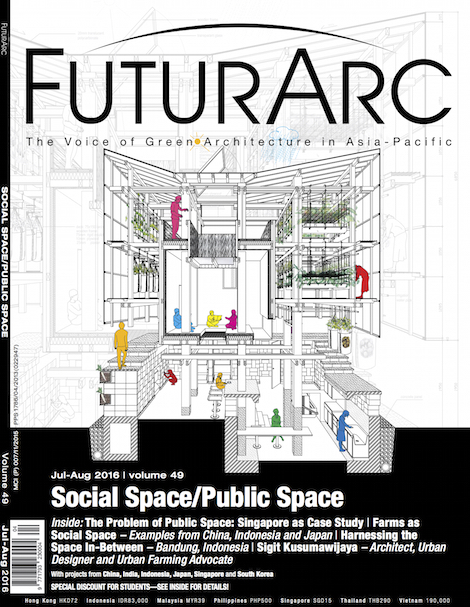Social Space/Public Space
Asian cities face a crisis of public space. This is not just the neglect or fragmentation of public space, it is also a loss of meaning that is critical to the making of social space.
Part of the ongoing challenge is that public space is undervalued in city planning, partly that it is misunderstood. The formal articulation of elements—squares, plazas, promenades and parks—are important, yes, but public space in Asia has another scale. The challenge then is to recognise the interstitial and embedded nature of shared space that is the DNA of cities. Design becomes a question of how we preserve and activate these spaces in a changing urban context.
Public space is important in an objective sense because cities are densifying. Densification leads to congestion and smaller personal living spaces. The space outside then becomes a kind of communal living room. In Asian cities, public space is a functional necessity, same as roads or utility grids. In the subjective sense, these spaces are an opportunity for people to connect with one another; social space is the cornerstone of urban well-being. This requires a more nuanced approach to questions on what kind of space, for who, as well as how it corresponds with lifestyles, past and present.
In this issue, Joshua Comaroff unpacks what we mean by public space, how public becomes social, with Singapore as case study. There are also several projects from Bandung, a city that continues to innovate interstitially. The Mumbai Esplanade is at the other end of the scale, large enough to be called socio-spatial infrastructure.
There are other emerging typologies of space that seek meaning through community farming. Nest We Grow is a prototype in Japan where neighbours come together to farm and eat. Floating Fields in Shenzhen is an abandoned factory that has been converted into an ecosystem of farming activities and a public park. The FuturArc Interview is with Sigit Kusumawijaya, one of the cofounders of Indonesia Berkebun, a movement that seeks to convert brownfield land into farms.
Predictably, this is a small sampling of what is out there, constrained by print deadlines. If you know of a public or social space that speaks to the question of how your city is evolving, drop us a note. We would be happy to consider it here on the website.
Table of Contents
1Q 2024: HEALTH/WELLNESS
Previous issues:
⠀
4Q 2023: YEAR-END ISSUE | WATER
⠀
3Q 2023: GREEN AWARDS | CROSS-GENERATIONAL ARCHITECTURE
⠀
2Q 2023: OLD IS GOLD
⠀
1Q 2023: MOBILITY & TRANSPORT
⠀
4Q 2022: YEAR-END ISSUE | POLICY VS PRACTICALITY, PRACTICE VS PRINCIPLES, PROGRESS VS PLANET
3Q 2022: GREEN AWARDS | REINTERPRETATION
2Q 2022: NEW & RE-EMERGING ARCHITECTURE
1Q 2022: HOUSING ASIA
To read the complete article, get your hardcopy at our online shop/newsstands/major bookstores; subscribe to FuturArc or download the FuturArc App to read the issues!


